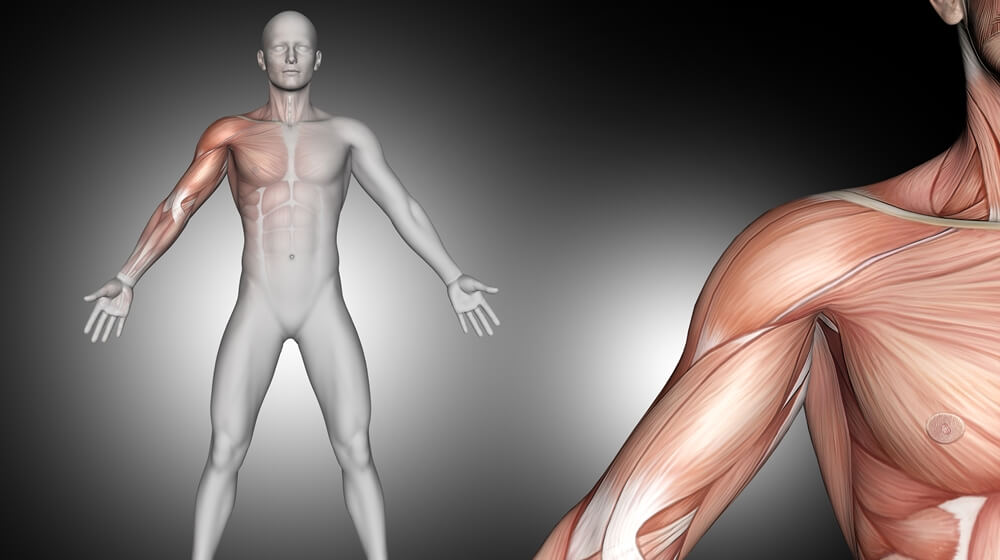In our quest for a healthier and more active lifestyle, exercise stands as a cornerstone. Beyond the immediate feeling of exertion, exercise sets a fascinating chain of events in motion within our bodies. Among the beneficiaries of this activity is our muscular system – a remarkable network of tissues responsible for movement, stability, and maintaining our posture.
We'll peel back the layers and unveil the remarkable changes that happen within your muscles when you work out. From electrifying energy boosts to the intricate dance of muscle fibre activation and the rushing river of improved blood flow – you won't believe the wonders that exercise brings to your muscles in the short term!
The Marvelous Muscular System
Behold the wonder that is our muscular system – a sophisticated network of muscles empowering every single one of our movements. This remarkable system comprises three distinct types: skeletal, smooth, and cardiac muscles.

First, let's admire the might of skeletal muscles, tightly connected to our bones, driving voluntary movements with seamless precision. Whether you're reaching for the stars or simply strolling along, these muscles play a leading role in expressing your physicality.
Meanwhile, smooth muscles operate silently, orchestrating involuntary functions within our internal organs. From aiding digestion to regulating blood flow, these unsung heroes quietly ensure the smooth functioning of our inner world.
And of course, we can't forget the heart's rhythmic symphony, conducted by the indefatigable cardiac muscles. With every beat, they pump life-giving blood throughout our bodies, earning the title of the hardest-working muscle.
Now, when the call to action beckons, our muscular system springs into action. Through awe-inspiring muscle contractions, it generates the force that fuels all physical endeavours. Walking, morning runs, dancing – these vibrant movements are born from the heart of our muscular system. Together, these incredible muscles lay the foundation for a healthier lifestyle. As we embrace exercise and physical activity, they rise to the occasion, becoming even more remarkable.
Immediate Energy Demands

As we begin exercising, our muscular system experiences a surge in energy demands. This is where the magic of immediate energy sources comes into play. Adenosine triphosphate (ATP) and creatine phosphate rapidly supply the required energy to power the initial stages of exercise.
ATP acts as the currency of energy in our cells, releasing energy when its bonds break. Creatine phosphate, on the other hand, readily donates its phosphate group to ADP (adenosine diphosphate) to regenerate ATP swiftly. These energy sources provide the burst of power needed for quick, explosive movements, such as jumping or sprinting.
Muscle Fibre Recruitment

As exercise intensity increases so does the demand for more muscle power. The body responds by recruiting motor units – groups of muscle fibres controlled by a single nerve. The number of motor units activated depends on the intensity and type of exercise performed.
Muscle fibres come in two primary types: Type I (slow-twitch) and Type II (fast-twitch) fibres. Type I fibres are better suited for endurance activities, as they are highly resistant to fatigue. Type II fibres, on the other hand, excel in powerful, high-intensity movements but tire more quickly.
Neuromuscular coordination plays a crucial role in optimizing muscle fibre recruitment, ensuring that the right fibres are engaged at the right time. This coordinated effort ensures efficient use of energy and muscle power during exercise.
Enhanced Blood Flow and Oxygen Delivery

The beauty of exercise lies not only in its immediate impact but also in the domino effect it creates within our bodies. While actively participating in physical activity, blood flow to the working muscles increases significantly. This surge in blood supply brings along a host of benefits for our muscles.
Vasodilation, the widening of blood vessels, occurs in response to exercise. This phenomenon facilitates improved oxygen and nutrient delivery to the muscle cells, aiding in energy production and waste removal. The heightened oxygenation enhances muscle endurance, allowing us to sustain physical efforts for longer durations.
Muscle Temperature and Flexibility

When we get our bodies in motion, another fascinating change occurs – an increase in muscle temperature. The rise in muscle temperature during exercise contributes to enhanced flexibility and range of motion. This is particularly beneficial for activities that require a wide range of joint movements, such as yoga and dancing.
A proper warm-up routine before exercise is essential to raise muscle temperature gradually. This helps prepare the muscular system for intense physical activity, reducing the risk of injuries and optimizing performance.
Dynamic stretching, which involves active movements that take muscles through their full range of motion, is an excellent way to further improve muscle flexibility before exercise.
Temporary Muscle Hypertrophy

For those engaging in resistance training, another short-term effect comes into play – temporary muscle hypertrophy. Resistance exercises, such as weightlifting, cause microscopic tears in muscle fibres. The body responds to this mechanical stress by temporarily increasing muscle fibre size.
This hypertrophic response is essential for muscle repair and adaptation to training. However, it's important to note that this short-term effect is distinct from long-term muscle growth, which occurs over an extended period of consistent training.
To maximize the benefits of temporary muscle hypertrophy, post-exercise recovery becomes paramount. Adequate rest and nutrition support muscle repair and prepare the muscular system for future challenges.
In Conclusion,
Exercise is a journey of self-discovery and improvement, unveiling just the tip of the iceberg when it comes to the short-term effects on the muscular system. As we've seen, from meeting immediate energy demands and activating muscle fibres to boosting blood flow and experiencing temporary muscle hypertrophy, each facet holds a pivotal role in enhancing our physical performance.
Whether you're an athlete or a fitness enthusiast, understanding the short-term effects of exercise on your muscles empowers you to tailor your workouts for maximum benefits.
But remember, this is only the beginning of the incredible benefits that exercise has in store for our bodies. So, as you embrace the wonders of physical activity, know that you're embarking on a path of endless possibilities and a healthier, stronger you. Keep exploring, keep challenging yourself, and watch how your muscular system responds with resilience and vigour. The journey has just begun, and your potential knows no bounds!
Don't miss out on our latest updates, new blog posts, exclusive content and special offers that will fuel your adventurous spirit! Sign up for our newsletter and join our vibrant community of like-minded individuals passionate about living life to the fullest.
Thank you for being a part of our community ♥ See you on the blog and in your inbox soon!







